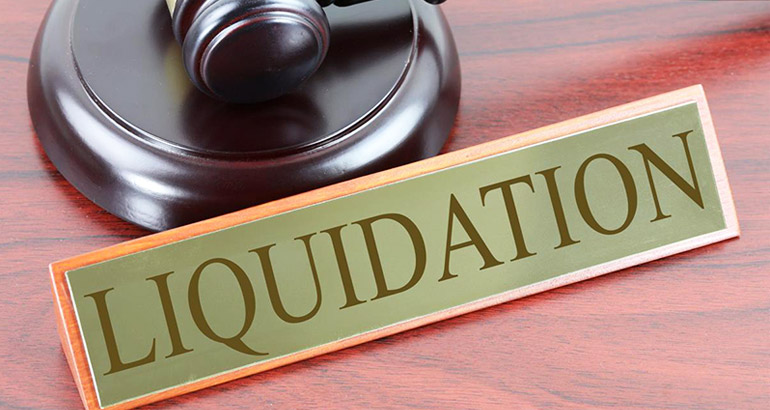Company Liquidation Fundamentals Explained
Table of ContentsIndicators on Company Liquidation You Should KnowThe 2-Minute Rule for Company LiquidationNot known Facts About Company LiquidationNot known Incorrect Statements About Company Liquidation The 4-Minute Rule for Company LiquidationThe Greatest Guide To Company Liquidation
When under means, a CVL is under the reliable control of the creditors, who can select a liquidator of their selection. Company Liquidation. At this stage, the role of the supervisors is terminated. The Creditors Voluntary Liquidation procedure is made use of when a firm has actually come to the end of its beneficial lifeUltimately it is the supervisors that commence the proceedings in a Creditors Voluntary Liquidation. The supervisors will formally resolve that the firm can not proceed to trade as a result of its debts, and they appoint an Accredited Insolvency Practitioner as the liquidators who prepares a statement of affairs to be provided to the financial institutions.
Whilst in the financial distress phase, it is still possible to restructure and turn things around if help is called in swiftly enough, as our programs. Nonetheless, if points do not boost, after that distress develops into a crisis, which is when the firm's debt the cash that it owes to its financial institutions go to a degree which indicates that liquidation is the only genuine option.
How Company Liquidation can Save You Time, Stress, and Money.
Our role is to manage an orderly liquidation prior to we dissolve it. For more information, help and advice about a Creditors Voluntary Liquidation, please The first consultation is FREE.
A compulsory company liquidation (or required ending up) is instituted by an order made by the court, typically on the petition of a financial institution, the firm or a shareholder. There are a number of possible reasons for making a winding-up order. One of the most typical is due to the fact that the firm is insolvent.
In a required liquidation the function of a liquidator is in most situations initially executed by an authorities called the. The Official Receiver is an officer of the court and a member of the Bankruptcy Service, an exec firm within the In most mandatory liquidations, the Authorities Receiver ends up being the liquidator promptly on the production of the winding-up order.
Company Liquidation Fundamentals Explained
This happens either at a conference of financial institutions assembled for the function or straight by the Secretary of State. Where an insolvency expert is not selected the Authorities Receiver stays liquidator. Where a required liquidation follows right away on from an, the court might appoint the previous administrator to act as liquidator.

Your restricted company might be liquidated (wound up) if it can not pay people or organisations it owes money to (its lenders). When your company owes cash the lenders may attempt to recover the financial debt by releasing a main request for settlement, called a legal need.
The court provides a winding-up order if it determines your firm can not pay its financial obligations and is financially troubled. They will take control of the firm and its assets.
Little Known Questions About Company Liquidation.
You and any type of various other of the firm's supervisors should co-operate with the liquidator. You can be prohibited from being a supervisor for up to 15 years or prosecuted if you have actually failed to accomplish your duties as a supervisor or damaged the law.
The business liquidation procedure is equivalent to browsing a check that lengthy and winding road in the dark there are potential stumbling blocks and stumbling blocks around every corner. That is, unless you have an insolvency professional in your edge to assist light the method. The begin of the liquidation procedure signifies the beginning of the end of a business as a lawful entity.

Company Liquidation for Beginners
From checking out optimal selections, the challenges you might face, and the crossroads you can expect to be waiting Continued for you once the process is full. The liquidator is brought right into the service to 'wind up' all ongoing affairs till, at the end of the process, the company is brought to a close.
Most of the time, HMRC will be the primary creditor as a result of unsettled taxes such as Company Tax Obligation, BARREL, Pay As You Earn (PAYE) or National Insurance Policy Contributions (NIC). Profession lenders, such as suppliers, will certainly likewise be able to do something about it if they believe they are not likely to be paid what they are owed.
If this takes place, it is necessary that you act rapidly as time is running out to conserve your company. Must there be no response to the Ending up Request within seven days of it being issued, your company will certainly then be sent out a Winding Up Order to force you to close.
The Ultimate Guide To Company Liquidation
They will chat you via every one of the alternatives readily available to you and advise what they believe is the very best strategy for you to take. A MVL can be asked for if your company is anonymous solvent but you still wish to close it down. It is the most popular alternative with company proprietors as it is one of the most tax-efficient means to stop trading.